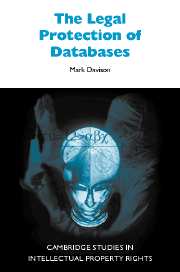Refine search
Actions for selected content:
48287 results in Computer Science
Appendix C - Binary Numbers
-
- Book:
- Elementary Cryptanalysis
- Published by:
- Mathematical Association of America
- Published online:
- 05 January 2012
- Print publication:
- 01 July 2009, pp 193-196
-
- Chapter
- Export citation
Frontmatter
-
- Book:
- Elementary Cryptanalysis
- Published by:
- Mathematical Association of America
- Published online:
- 05 January 2012
- Print publication:
- 01 July 2009, pp i-vi
-
- Chapter
- Export citation
Automatic annotation of context and speech acts for dialogue corpora
-
- Journal:
- Natural Language Engineering / Volume 15 / Issue 3 / July 2009
- Published online by Cambridge University Press:
- 01 July 2009, pp. 315-353
-
- Article
- Export citation
4 - Polygraphic Systems
-
- Book:
- Elementary Cryptanalysis
- Published by:
- Mathematical Association of America
- Published online:
- 05 January 2012
- Print publication:
- 01 July 2009, pp 103-128
-
- Chapter
- Export citation

The Legal Protection of Databases
-
- Published online:
- 30 June 2009
- Print publication:
- 26 June 2003
The Pontydian Performance: the performative layer
-
- Journal:
- Organised Sound / Volume 14 / Issue 2 / August 2009
- Published online by Cambridge University Press:
- 29 June 2009, pp. 134-141
- Print publication:
- August 2009
-
- Article
- Export citation
OSO volume 14 issue 2 Cover and Front matter
-
- Journal:
- Organised Sound / Volume 14 / Issue 2 / August 2009
- Published online by Cambridge University Press:
- 29 June 2009, pp. f1-f2
- Print publication:
- August 2009
-
- Article
-
- You have access
- Export citation
Editorial
-
- Journal:
- Organised Sound / Volume 14 / Issue 2 / August 2009
- Published online by Cambridge University Press:
- 29 June 2009, pp. 121-123
- Print publication:
- August 2009
-
- Article
-
- You have access
- HTML
- Export citation
OSO volume 14 issue 2 Cover and Back matter
-
- Journal:
- Organised Sound / Volume 14 / Issue 2 / August 2009
- Published online by Cambridge University Press:
- 29 June 2009, pp. b1-b7
- Print publication:
- August 2009
-
- Article
-
- You have access
- Export citation
Understanding Interactive Systems
-
- Journal:
- Organised Sound / Volume 14 / Issue 2 / August 2009
- Published online by Cambridge University Press:
- 29 June 2009, pp. 124-133
- Print publication:
- August 2009
-
- Article
- Export citation
Towards Unified Design Guidelines for New Interfaces for Musical Expression
-
- Journal:
- Organised Sound / Volume 14 / Issue 2 / August 2009
- Published online by Cambridge University Press:
- 29 June 2009, pp. 142-155
- Print publication:
- August 2009
-
- Article
- Export citation
Software Agents in Music and Sound Art Research/Creative Work: current state and a possible direction
-
- Journal:
- Organised Sound / Volume 14 / Issue 2 / August 2009
- Published online by Cambridge University Press:
- 29 June 2009, pp. 156-167
- Print publication:
- August 2009
-
- Article
- Export citation
Of Epistemic Tools: musical instruments as cognitive extensions
-
- Journal:
- Organised Sound / Volume 14 / Issue 2 / August 2009
- Published online by Cambridge University Press:
- 29 June 2009, pp. 168-176
- Print publication:
- August 2009
-
- Article
- Export citation
Movie examples – issue 14(2)
-
- Journal:
- Organised Sound / Volume 14 / Issue 2 / August 2009
- Published online by Cambridge University Press:
- 29 June 2009, p. 227
- Print publication:
- August 2009
-
- Article
- Export citation
Perspectives on Gesture–Sound Relationships Informed from Acoustic Instrument Studies
-
- Journal:
- Organised Sound / Volume 14 / Issue 2 / August 2009
- Published online by Cambridge University Press:
- 29 June 2009, pp. 208-216
- Print publication:
- August 2009
-
- Article
- Export citation
Instrumental Listening: sonic gesture as design principle
-
- Journal:
- Organised Sound / Volume 14 / Issue 2 / August 2009
- Published online by Cambridge University Press:
- 29 June 2009, pp. 177-187
- Print publication:
- August 2009
-
- Article
- Export citation
Understanding Interaction in Contemporary Digital Music: from instruments to behavioural objects
-
- Journal:
- Organised Sound / Volume 14 / Issue 2 / August 2009
- Published online by Cambridge University Press:
- 29 June 2009, pp. 188-196
- Print publication:
- August 2009
-
- Article
- Export citation
Interactivity for Mobile Music-Making
-
- Journal:
- Organised Sound / Volume 14 / Issue 2 / August 2009
- Published online by Cambridge University Press:
- 29 June 2009, pp. 197-207
- Print publication:
- August 2009
-
- Article
- Export citation
The Musical Interface Technology Design Space
-
- Journal:
- Organised Sound / Volume 14 / Issue 2 / August 2009
- Published online by Cambridge University Press:
- 29 June 2009, pp. 217-226
- Print publication:
- August 2009
-
- Article
- Export citation
